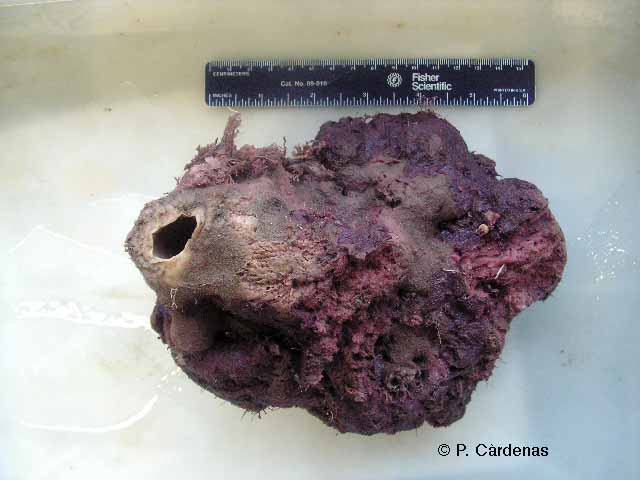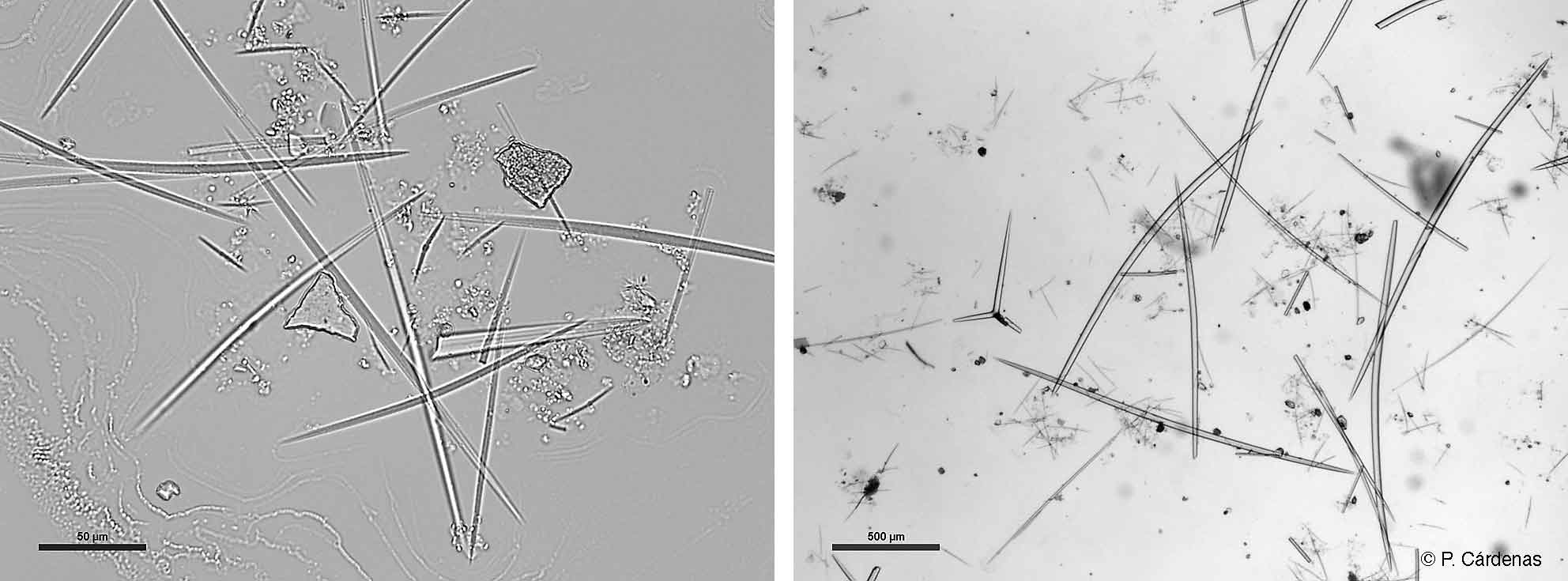| Submitted |
| Characella pachastrelloides |
| 2006-07-22 |
| Mingulay Reef, outer Hebrides, Scotland (56° 49' 27'' N, 7° 16' 07'' W) |
| 128m |
| Rob van Soest |
| ZMAPOR 20375 |
| Zoological Museum, University of Amsterdam |
| Ethanol 96% |
| Rob van Soest |
| 1st of April 2009 |
| Paco Cardenas |
Morphological description (show/hide)
| massive, lumpy, 17 cm high, 14 cm wide. | | light brownish, stained purple. | | large oscule (ca. 2 cm in diameter) placed at the summit. Other smaller oscules (0.5-0.7 cm wide) were irregularly distributed. | | not compressible. | | irregular, strongly hispid and dirty. | | Apart from the radial position of some triaenes, the arrangement of the spicules in the choanosome is confused. | | There is no real separated cortex, just a dense accumulation of paratangential microxeas II, reinforced by an underlying dense layer of paratangential microxeas I. This ectosome is invisible to the naked eye. Amphiasters are commonly found in the cortex area but are also moderately present in the choanosome. | | oxeas I, oxea II (only one found), dichotriaenes. | | amphiasters, microxeas I, microxeas II. |
|
Reference (show/hide)
| Cárdenas, P., Xavier, J.R., Reveillaud, J., Schander, C. & Rapp, H.T. (2011) Molecular phylogeny of the Astrophorida (Porifera, Demospongiae) reveals an unexpected high level of spicule homoplasy. PLoS ONE, 6, e18318. |
|





